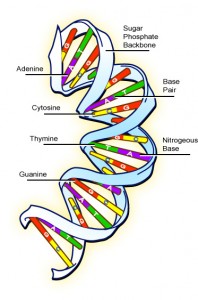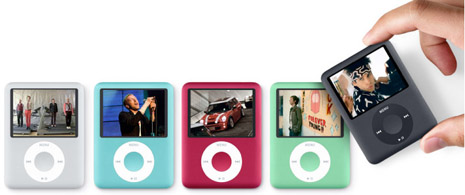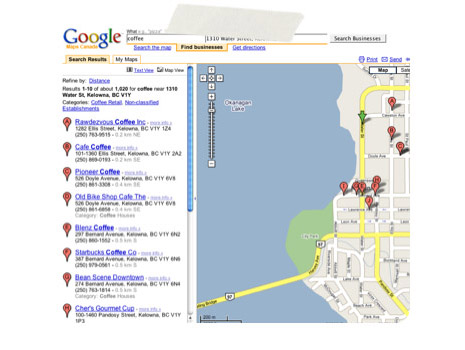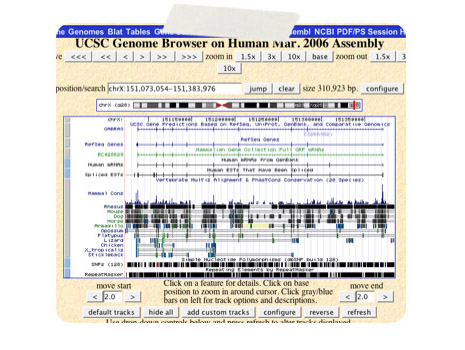The story of the Human genome project gets you thinking about some of the amazing ways in which technology has changed the way we do science. Technology drives BIG science, like genome projects, which have major impact on our own lives.
 Presentation by: Dr. Joanne Fox, Wild about Science, Mitchell Odyssey Foundation, Symposia ’08 Richmond, BC.
Presentation by: Dr. Joanne Fox, Wild about Science, Mitchell Odyssey Foundation, Symposia ’08 Richmond, BC.
—
Your students have heard about the human genome project in the news. As science progresses, you will continue to hear stories about genomics and bioinformatics and the impact they’re having for all of us. Bioinformatics is a cutting edge research science that’s all about bringing computers and biology together. With the prevalence of technology in our own lives (How many of you brought your iPod with you today?), learning about bioinformatics is another way to encourage your students to get excited about science. iPods & Genomes are everywhere!

The human genome project is an example of one of the great milestones accomplished by scientists and driven by this era of breakthroughs in basic science and technology. As scientists, we’ve now known the sequence of our own genetic code for over five years. In fact, DNA sequencing technology has progressed so rapidly that the first individual genome sequences have been published. This New York Times article has an excellent feature on Dr. Craig Venter and his own personal genome. Genome sequencing is now even becoming a luxury item for the rich and famous.

With it’s 3 billion base pairs, even you can carry your own genome sequence in your pocket. Go the internet, burn a DVD, and presto, you’ve got the human genome in your hand. Imagine the day when you’ll be able to walk into your doctor’s office with your genome in your pocket. You and your students will face this reality in your own lifetime. Are you ready to talk to your students about the implications of genomics?
One tool that you can use to help engage your students with bioinformatics and the story of the human genome is the UCSC genome browser. A genome browser is a system for visualizing and retrieving genomics data. Scientists use the UCSC genome browser to view genome sequences and download data for their research using the internet. These tools are freely available and can be accessed by anyone with an internet connection. If you can use google maps, you’ve got enough technical expertise to do a basic search using the UCSC genome browser. You can click here to see an example search of the human genome.

Carrying out a search of the Human Genome is just like using Google Maps. Enter the address (or name) of your favorite gene, press the search button, and you’re looking at an online map of the genome in the neighborhood of that gene.

As an activity for your students, you can ask the questions, “What chromosome is your gene located on? Which genes are closest to your starting point?” These activities can be done online at: http://genome.ucsc.edu/cgi-bin/hgTracks
TEACHING RESOURCES FOR THIS ACTIVITY:
Movie of the workshop content. (Sorry, there’s no audio).
If you’re interested in more activities from AMBL that engage your high school audience, please check our classroom field trip programs and our science education conferences.
